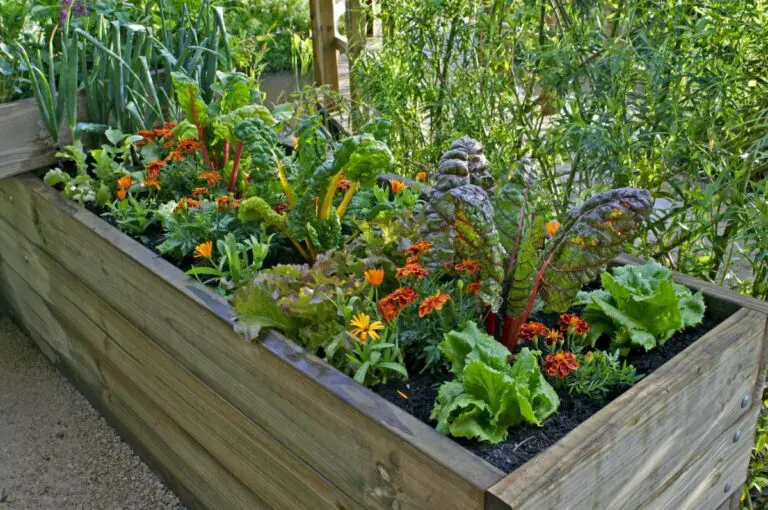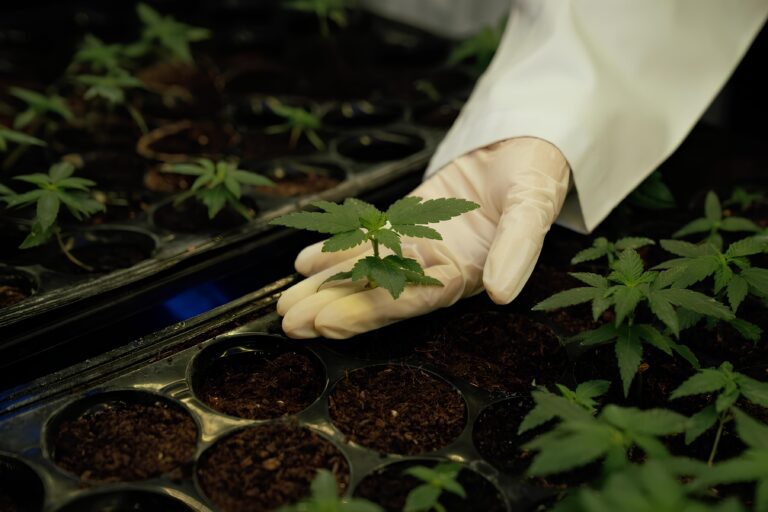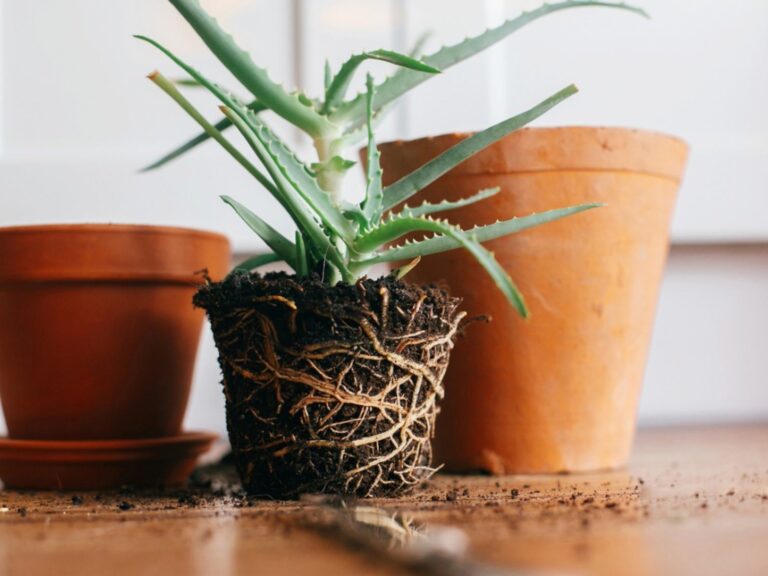Grow Room Ventilation 101
Ever felt like your plants are suffocating in their own environment? Wondering why your indoor garden isn’t thriving as it should? It might be time to give your grow room some much-needed fresh air! Ventilation plays a crucial role in creating the perfect growing conditions for your plants, but it’s often overlooked. In this crash course on grow room ventilation, we’ll cover everything from the basics to advanced techniques. From keeping temperatures in check to ensuring proper air circulation, we’ve got you covered. Whether you’re a seasoned grower or just starting out, understanding the ins and outs of ventilation is essential for success. So, grab your fan and let’s clear the air! With the right ventilation setup, your plants will thank you with vibrant growth and bountiful harvests. Let’s dive into the world of grow room ventilation and breathe new life into your indoor garden!
Table of Contents
Understanding the Importance of Proper Air Circulation in Indoor Gardening Spaces
Proper air circulation is a critical aspect of successful indoor gardening spaces. Ensuring that your plants have access to fresh, oxygen-rich air is essential for their growth and overall health. Without adequate air circulation, your plants may struggle to thrive, leading to stunted growth, nutrient deficiencies, and increased susceptibility to pests and diseases.
One of the main reasons why proper air circulation is vital in indoor gardening spaces is to prevent the buildup of stagnant air. Stagnant air can trap heat, humidity, and toxins, creating an unfavorable environment for plants. This stagnant air can also hinder the exchange of gases, such as carbon dioxide and oxygen, which are essential for photosynthesis. By implementing an effective ventilation system, you can remove stagnant air and ensure a continuous flow of fresh air, maximizing the potential for healthy plant growth.

Factors to Consider When Designing an Effective Grow Room Ventilation System
When designing an effective grow room ventilation system, there are several important factors to consider. One of the most crucial aspects is the size and layout of the grow room itself. The size of the room will determine the amount of ventilation equipment needed, as well as the placement of intake and exhaust fans. It is important to have proper airflow throughout the entire space to ensure all plants receive adequate oxygen and nutrients.
Additionally, the temperature and humidity levels must be carefully controlled in a grow room. This can be achieved through proper ventilation techniques. For example, using intake fans can bring in fresh air while exhaust fans remove hot air, helping to regulate the temperature. Humidity can be managed by using air filters that remove excess moisture from the air. It is important to monitor these levels regularly and make adjustments to the ventilation system as necessary.

Overall, designing an effective grow room ventilation system requires careful consideration of the size and layout of the space, as well as the temperature and humidity requirements of the plants. By addressing these factors and implementing proper ventilation techniques, gardeners can create a healthy and productive growing environment for their plants.
Evaluating the Size and Layout of Your Grow Room for Optimal Airflow
When it comes to indoor gardening, the size and layout of your grow room play a crucial role in achieving optimal airflow. Proper airflow is essential for a healthy and thriving garden, as it helps to circulate fresh air, maintain consistent temperature and humidity levels, and prevent the buildup of pathogens and pests. Therefore, evaluating the size and layout of your grow room is a critical step in designing an effective ventilation system.
Firstly, consider the size of your grow room in relation to the number of plants you intend to cultivate. Overcrowding can impede airflow and hinder plant growth, so it’s important to provide enough space for each plant to breathe and thrive. A general rule of thumb is to allow for at least four square feet of space per plant. Additionally, take into account the height of your plants and ensure that your grow room has enough vertical space to accommodate their growth, including the height of ventilation equipment that you may need to install.
Next, consider the layout of your grow room and the placement of ventilation equipment. Optimal airflow can be achieved by positioning intake and exhaust fans strategically to create a continuous flow of fresh air throughout the room. Placement near the floor and ceiling is recommended to ensure efficient air circulation. Additionally, be mindful of any obstacles or obstructions such as plants, equipment, or walls that could hinder airflow. By carefully evaluating the size and layout of your grow room, you can ensure that air moves freely and effectively, creating a healthy growing environment for your plants.
Selecting the Right Ventilation Equipment for Your Grow Room Setup
When it comes to setting up a grow room, selecting the right ventilation equipment is crucial for maintaining optimal air circulation and ensuring a healthy growing environment. The right ventilation equipment not only helps regulate temperature and humidity levels but also plays a vital role in preventing the buildup of harmful gases and providing fresh air for plants.
One of the key components of a grow room ventilation system is an exhaust fan. This fan helps to remove hot, stale air from the grow room and expel it outside. When choosing an exhaust fan, it’s important to consider factors such as the size of your grow room, the number of plants you have, and the amount of heat generated by your lighting system. The fan should have sufficient power to effectively remove excess heat and maintain a comfortable temperature for your plants. Additionally, selecting a fan with adjustable speed settings can provide greater control over the airflow and temperature regulation in your grow room.
| Aspect | Consideration |
|---|---|
| Grow Room Size | Determine the cubic footage of the grow space to ensure the ventilation system can adequately exchange air volume. |
| Temperature Control | Choose equipment with adjustable fan speeds or thermostatic controls to maintain optimal temperature levels. |
| Humidity Management | Opt for ventilation systems with humidity sensors or dehumidifiers to regulate moisture levels in the grow room. |
| Air Filtration | Select equipment with built-in filters to remove contaminants and odors, ensuring clean air circulation. |
| Noise Level | Consider the noise output of ventilation fans and opt for quieter models, especially if the grow room is indoors. |
| Energy Efficiency | Look for energy-efficient ventilation equipment to minimize operational costs over time. |
| Installation Flexibi | Choose equipment that offers easy installation and compatibility with existing grow room setups. |
| Budget | Evaluate the cost-effectiveness of ventilation systems based on your budget and long-term maintenance expenses. |
Another important piece of ventilation equipment to consider is an intake fan. Intake fans help bring fresh air into the grow room, providing a constant supply of oxygen for the plants. These fans are typically placed near the bottom of the grow room to facilitate the movement of air upwards. It’s recommended to choose an intake fan that matches the size and power of your exhaust fan to ensure a balanced airflow. By placing the intake fan in a strategic location, you can create a continuous flow of air that promotes optimal growth and prevents the buildup of stagnant air pockets.
In addition to exhaust and intake fans, other ventilation equipment like carbon filters, air ducts, and oscillating fans may also be necessary depending on the specific needs of your grow room setup. The selection of these components should be based on factors such as the size of the grow room, the type and number of plants being cultivated, and the level of control you want over temperature, humidity, and odor. Properly chosen ventilation equipment will contribute to creating a controlled environment that fosters healthy plant growth and maximizes yields.
The Role of Intake and Exhaust Fans in Maintaining a Healthy Growing Environment
Intake and exhaust fans play a crucial role in maintaining a healthy growing environment in indoor gardens. These fans are responsible for ensuring proper air circulation, which is essential for the overall health and productivity of your plants.
Intake fans bring in fresh air from the outside and supply it to the grow room. This continuous supply of fresh air not only replenishes the carbon dioxide levels needed for photosynthesis but also helps in maintaining optimal temperature and humidity levels. By preventing the air from becoming stagnant or stale, intake fans create an environment where plants can thrive. It is important to consider the size and power of the intake fan based on the size of your grow room to ensure sufficient air supply.
On the other hand, exhaust fans are responsible for removing stale air, excess heat, and humidity from the grow room. This constant removal of moisture and heat prevents the growth of mold, mildew, and other pathogens that can harm your plants. Additionally, exhaust fans remove any odors that might be present in the grow room, making it a more pleasant space to work in. It is crucial to properly size the exhaust fan to match the size and airflow requirements of the grow room, ensuring that it effectively removes the stale air and maintains the desired temperature and humidity levels.
In conclusion, intake and exhaust fans work together to maintain proper air circulation and create a healthy growing environment for your plants. By supplying fresh air and removing stale air, these fans help in regulating temperature, humidity, and odors, ultimately ensuring the success of your indoor gardening endeavors.
Exploring Different Types of Air Filters and Their Significance in Grow Room Ventilation
Air filters play a crucial role in maintaining a healthy and optimal growing environment in indoor gardens. They are designed to remove impurities, dust, pollen, and other particles from the air, ensuring that plants receive clean and fresh air for their growth. By filtering the air, these devices prevent the accumulation of harmful contaminants that can negatively impact plant health and productivity.
There are various types of air filters available for grow room ventilation, each with its own specific functionality and benefits. One common type is the mechanical filter, which uses a fine mesh to trap particles as air passes through. These filters are highly effective in removing larger particles such as dust and dirt. Another popular type is the activated carbon filter, which excels at removing odors and volatile organic compounds (VOCs) from the air. This is particularly important in indoor gardening spaces as certain plants, especially those in the cannabis family, can emit strong odors. Additionally, high-efficiency particulate air (HEPA) filters are widely used for their ability to capture tiny particles down to 0.3 microns in size, making them ideal for preventing the spread of mold spores, allergens, and other harmful substances. By carefully selecting the appropriate air filter for your grow room setup, you can ensure that your plants thrive in a clean and pollutant-free environment.
Controlling Temperature and Humidity Levels through Ventilation Techniques
Maintaining optimal temperature and humidity levels is crucial for the success of any indoor gardening endeavor. Proper ventilation techniques play a critical role in controlling these factors and ensuring a healthy growing environment for your plants.
Temperature control is essential as different plants have specific temperature requirements for optimal growth and development. A well-ventilated grow room facilitates the exchange of air, which helps regulate temperature levels. By introducing fresh air and removing hot air, you can prevent overheating and create a more comfortable climate for your plants. This can be achieved through the use of intake and exhaust fans strategically placed to promote airflow and manage temperature fluctuations effectively. Additionally, integrating temperature sensors and controllers can help automate the ventilation system and maintain a consistent temperature range, providing stability for your plants to thrive.
| Ventilation Technique | Description | Suitable for |
|---|---|---|
| Natural Ventilation | Utilizes natural airflow through openings | Moderate climates |
| Mechanical Ventilation | Uses mechanical systems like fans or HVAC | All climates |
| Exhaust Fans | Removes hot or humid air from indoor spaces | Hot and humid climates |
| Fresh Air Intake | Brings in fresh air from outside | All climates |
| Cross Ventilation | Utilizes openings on opposite sides for airflow | Moderate to hot climates |
| Dehumidification Systems | Removes excess moisture from the air | Humid climates |
| Heat Recovery Ventilation | Recovers heat from outgoing air | Cold climates |
Another vital consideration in indoor gardening is humidity control. Excessive moisture can lead to issues such as mold, mildew, and fungal infections, while low humidity levels can cause stunted growth and leaf desiccation. Adequate ventilation can help manage humidity by removing excess moisture and ensuring proper air circulation. By venting out humid air and bringing in fresh air, you can maintain an optimal humidity range for your plants’ specific needs. To further enhance humidity control, you can incorporate dehumidifiers or humidifiers into your ventilation system, depending on your grow room’s requirements. Mastering temperature and humidity control through ventilation techniques is key in creating a favorable environment for your plants to flourish and produce an abundant harvest.
Managing Odor Control in Grow Rooms: Strategies and Best Practices
Managing odor control in grow rooms is crucial for maintaining a healthy and pleasant environment for both plants and growers. The distinct aromas emitted by cannabis, herbs, or other plants can be overpowering and attract unwanted attention. To effectively manage odors, it is important to implement strategies and best practices that address the root causes. One effective strategy is to use carbon filters in conjunction with proper ventilation systems.
Carbon filters work by trapping and neutralizing odorous molecules as air passes through. They contain activated carbon, which has the ability to absorb these molecules, effectively reducing the odor. When incorporated into a grow room ventilation system, carbon filters can significantly reduce the release of odors into the surrounding environment. It is essential to select a carbon filter that is appropriately sized for the grow room and replace it regularly to ensure maximum effectiveness. Additionally, integrating an exhaust fan that is powerful enough to facilitate efficient air circulation can help maintain odor control within the grow room. By incorporating these strategies, growers can create an environment that minimizes odors and promotes a positive and odor-free growing experience.
Troubleshooting Common Ventilation Issues and How to Resolve Them
When it comes to indoor gardening, proper air circulation is crucial for the health and growth of your plants. However, like any system, there can be issues that arise with the ventilation setup in your grow room. Understanding common ventilation issues and knowing how to resolve them will ensure that your plants thrive in a healthy environment.
One common issue is inadequate air circulation, which can lead to stagnant air, excessive humidity, and the spread of pests and diseases. To resolve this, check that your intake and exhaust fans are functioning properly and positioned strategically to optimize airflow. Additionally, placing oscillating fans within the grow room will help to circulate the air and prevent stagnant pockets. Regularly clean and maintain your fans to ensure they are working efficiently.
Another common issue is improper temperature and humidity levels. If the temperature is too high, it can stress or even damage your plants. On the other hand, if the humidity is too low, it can lead to dehydration, while excessive humidity can encourage the growth of mold and other harmful pathogens. To resolve this, adjust the positioning and speed of your fans to control temperature and humidity levels. Consider investing in a temperature and humidity controller, which can automate these adjustments for you. Additionally, using proper insulation and sealing any leaks in your grow room will help maintain a stable environment.
By addressing these common ventilation issues, you can create an optimal growing environment for your indoor garden. Remember to regularly monitor and maintain your ventilation system to ensure its effectiveness. In the next section, we will explore in more detail how different types of air filters can significantly contribute to the overall health of your plants by maintaining clean and fresh air in the grow room.
Optimizing Energy Efficiency in Grow Room Ventilation Systems
When it comes to indoor gardening spaces, optimizing energy efficiency in grow room ventilation systems is crucial. Not only does it help reduce your carbon footprint, but it also contributes to sustainable and cost-effective cultivation practices. By implementing energy-efficient ventilation systems, you can ensure a healthy and thriving growing environment while minimizing energy consumption.
One way to optimize energy efficiency is by selecting ventilation equipment that is specifically designed for energy conservation. Look for fans and exhaust systems that are ENERGY STAR certified, as they are tested and proven to meet strict energy efficiency standards. These products are designed to provide optimal airflow while minimizing power consumption. Additionally, consider investing in variable speed fans, which allow you to adjust the airflow according to your specific needs, reducing energy waste. By choosing energy-efficient ventilation equipment, you can maintain the ideal air circulation in your grow room without compromising on sustainability.
How does proper air circulation affect indoor gardening?
Proper air circulation is essential for indoor gardening as it helps distribute fresh air, CO2, and remove excess heat and humidity, ensuring healthy plant growth and preventing the buildup of pests and diseases.
What factors should be considered when designing a grow room ventilation system?
Factors to consider include the size and layout of the grow room, the number and type of plants being grown, the desired temperature and humidity levels, and the availability of power and ventilation equipment.
How can I evaluate the size and layout of my grow room for optimal airflow?
To evaluate the size and layout, consider the location of the intake and exhaust vents, the placement of obstacles and equipment that may hinder airflow, and the ability to create a uniform airflow throughout the entire grow room.
What are some important considerations when selecting ventilation equipment for a grow room setup?
Important considerations include the capacity of the equipment to handle the size of the grow room, the noise level produced by the equipment, the energy efficiency of the equipment, and any additional features required for temperature and humidity control.
What is the role of intake and exhaust fans in maintaining a healthy growing environment?
Intake fans bring in fresh air and CO2, while exhaust fans remove stale air, excess heat, and humidity. This exchange helps maintain optimal growing conditions and prevents the accumulation of contaminants.
What are the different types of air filters used in grow room ventilation?
Different types of air filters include carbon filters for odor control, HEPA filters for removing particulates, and dust filters for preventing debris from entering the grow room.
How can ventilation techniques help control temperature and humidity levels in a grow room?
Ventilation techniques such as using fans, adjusting intake and exhaust rates, and utilizing timers can help regulate temperature and humidity levels by expelling excess heat and moisture and bringing in fresh air.
What strategies and best practices can be used for odor control in grow rooms?
Strategies for odor control include using carbon filters, maintaining proper airflow, implementing air scrubbers, and using odor-neutralizing agents or ozone generators.
What are some common ventilation issues in grow rooms and how can they be resolved?
Common ventilation issues include inadequate airflow, improper temperature and humidity control, and excessive noise. These issues can be resolved by adjusting fan speeds, repositioning ventilation equipment, or upgrading to more efficient systems.
How can energy efficiency be optimized in grow room ventilation systems?
Energy efficiency can be optimized by choosing energy-efficient ventilation equipment, properly sealing the grow room to prevent air leaks, using timers and controllers for automated ventilation, and regularly maintaining and cleaning ventilation components.

Pallavi Gupta is a burgeoning writer at SouthElMonteHydroponics, blending her passion for data analysis with a keen interest in biotechnology. Currently pursuing a Bachelor’s in Biotechnology at Amity University, Pallavi delves into the intricacies of life sciences while gaining hands-on experience in the exciting world of data analysis. Her unique background provides a fresh perspective on hydroponic farming, as she explores the intersection of biotechnology and sustainable agriculture. Through her writing, Pallavi aims to bridge the gap between data-driven insights and innovative farming practices, inspiring others to harness technology for a greener future.






